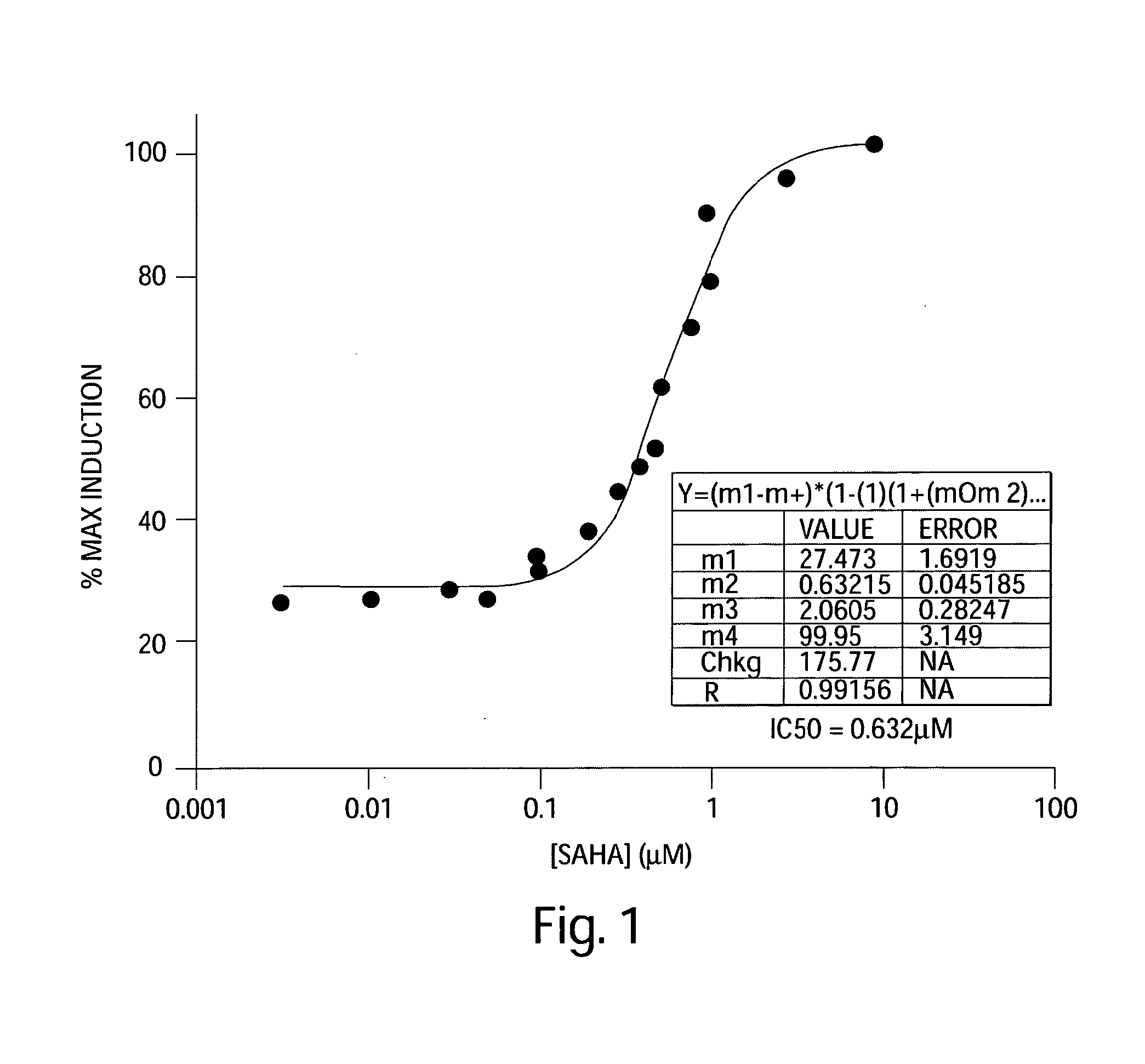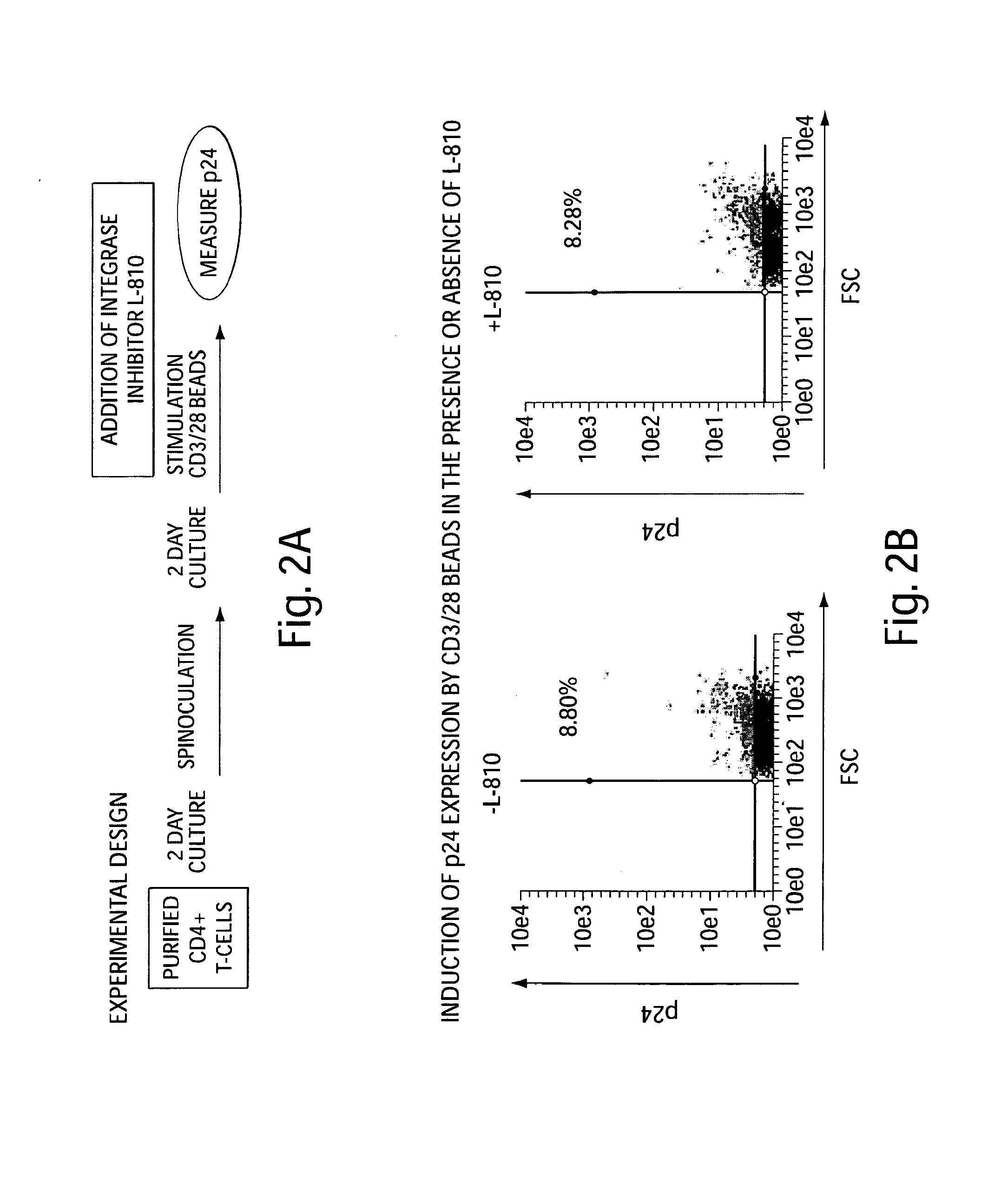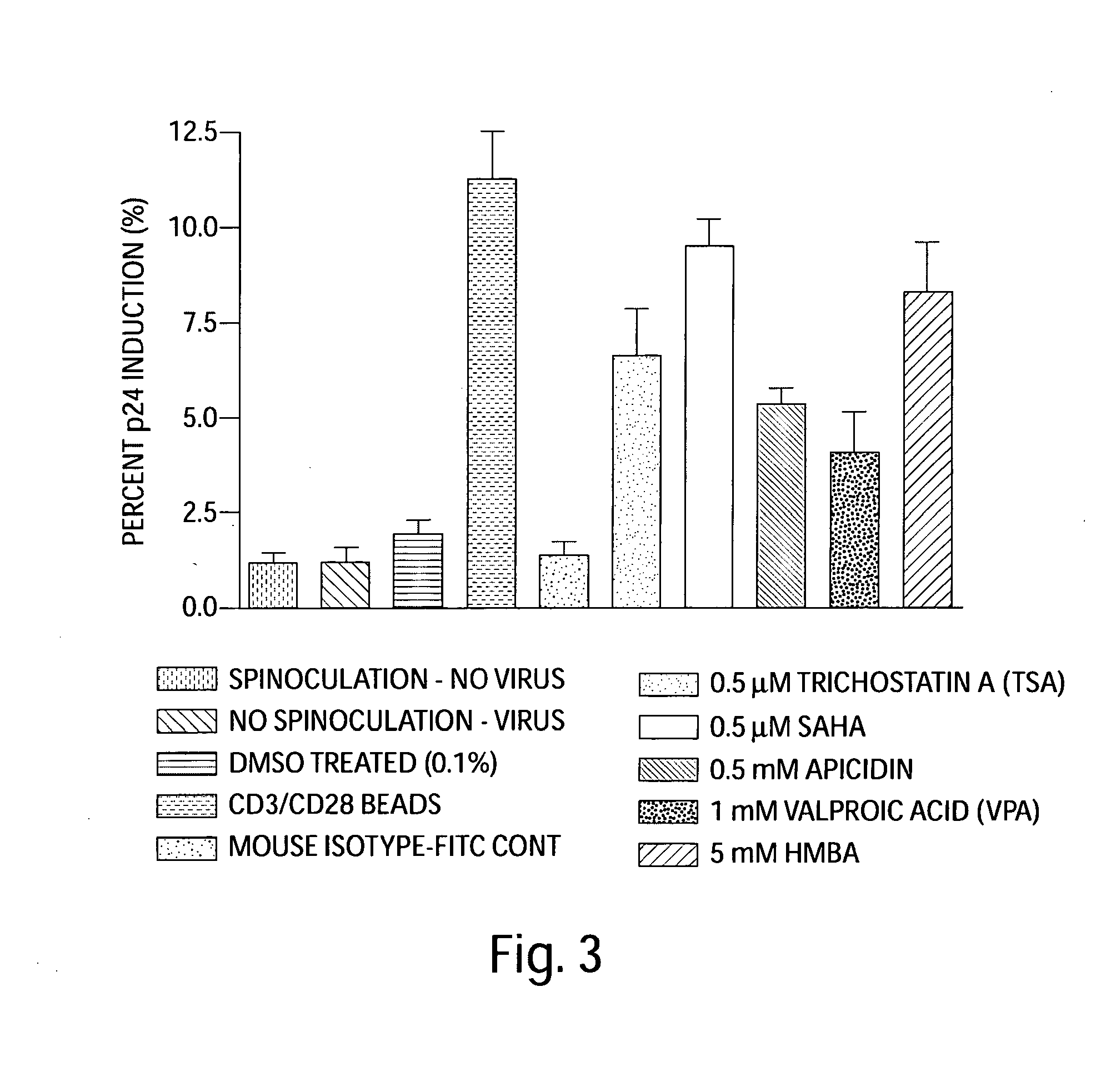Methods of Using SAHA for Treating HIV Infection
a technology of saha and hiv infection, applied in the field of treating hiv infection, can solve the problems of depletion of the reservoir of persistent hiv infection, ineffective reduction of residual, and inability to efficiently reduce residual effects
- Summary
- Abstract
- Description
- Claims
- Application Information
AI Technical Summary
Benefits of technology
Problems solved by technology
Method used
Image
Examples
example 1
Expression of Latent HIV is Induced by SAHA
[0123]These experiments have investigated the ability of HDAC inhibitor, such as SAHA, to induce HIV promoter expression and virus production from resting CD4+ cells. Specifically, the effect of SAHA on J89, a Jurkat T cell line infected with a single HIV genome encoding the enhanced green fluorescence protein (EGFP) was characterized.
[0124]For these experiments, J89 cells (2×106 cells) were washed with phosphate-buffered saline (PBS) and incubated overnight at 37° C. under 5% carbon dioxide in media containing 0.5% fetal bovine serum (FBS; Invitrogen, Carlsbad, Calif., USA). Cells were then washed and incubated for 2 hours in media without serum and containing 400 nmol / 1 trichostatin A (Sigma, St. Louis, Mo., USA) or 1-5 mmol / 1 VPA (Sigma), or they were untreated. FBS was then added to a final concentration of 20% and cells were incubated only for an additional 2 hours to avoid the induction of secondary gene effects. Cells were washed wit...
example 2
Dose-Response of SAHA into ACH-2 Cell Line Model for HIV Latency
[0129]These experiments investigated the ability of SAHA to induce HIV promoter expression and virus production from resting CD4+ cells. Specifically, the effect of SAHA on ACH-2 cell line model for HIV latency was characterized.
[0130]For these experiments, three T-75 flasks of ACH-2 cells were centrifuged at 1000 rpm for 5 minutes at room temperature. The supernatant was aspirated and cells were resuspend in 10 mL media (RPMI 1640 (Invitrogen, 11835-055), 2 mM L-glutamine (Invitrogen, 10082-139), 10% FBS (Invitrogen, 25030-081), 1× penicillin / streptomycin (Invitrogen, 15140-122)). For further testing, cells were plated into 96-well Costar (cat #3799) round bottom plate. To each well, 90 μL of media and 10 μL of SAHA was added. In addition, one column included addition of DMSO as a negative control. Further, SAHA was added at the following final concentrations: 10 μM, 3 μM, 1 0.8 μM, 0.6 μM, 0.5 μM, 0.4 μM, 0.3 μM, 0.2 ...
example 3
Effectiveness of SAHA in Inducing HIV Expression from Primary Cells Infected with HIV In Vitro
[0141]To demonstrate the effectiveness of SAHA (vorinostat) in inducing HIV expression from primary cells infected with HIV in vitro, the following experiment was carried out: CD4+ T-cells were purified by using a two-stage process by Biological Specialty (Colmar, Pa.).
[0142]Briefly, RosetteSep Human CD4+ T-cell enrichment antibody cocktail was added to whole blood in order to cross-link unwanted cells to red blood cells, and CD4+ T-cells were collected following centrifugation over Ficoll-Paque PLUS density medium. Enriched CD4+ T-cells were furthered purified by negative selection to remove residual CD8+ T cells, B cells, monocytes, NK cells, and activated CD4+ T cells using appropriate monoclonal antibodies and magnetic beads conjugated with antibodies to mouse immunoglobulin G. The depletion of activated CD4+ T cells was accomplished by using antibodies to both early (CD69 and CD25) and...
PUM
 Login to View More
Login to View More Abstract
Description
Claims
Application Information
 Login to View More
Login to View More - R&D
- Intellectual Property
- Life Sciences
- Materials
- Tech Scout
- Unparalleled Data Quality
- Higher Quality Content
- 60% Fewer Hallucinations
Browse by: Latest US Patents, China's latest patents, Technical Efficacy Thesaurus, Application Domain, Technology Topic, Popular Technical Reports.
© 2025 PatSnap. All rights reserved.Legal|Privacy policy|Modern Slavery Act Transparency Statement|Sitemap|About US| Contact US: help@patsnap.com



